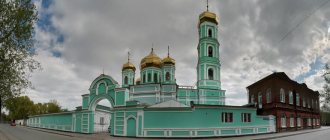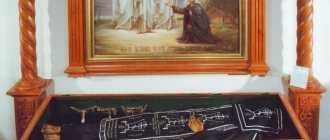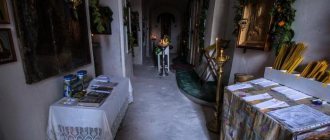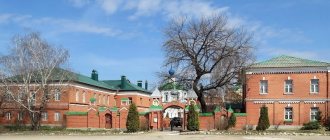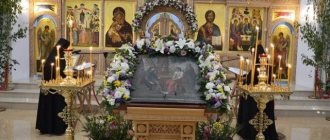Mir
Russia Smolensk region Boldino village Holy Trinity Boldin Monastery Map loading in progress...
{"format":"leaflet","minzoom":false,"maxzoom":false,"limit":50,"offset":0,"link":"all","sort":[""], "order":[],"headers":"show","mainlabel":"","intro":"","outro":"","searchlabel":"\u2026 \u0441\u043b\u0435\ u0434\u0443\u044e\u0449\u0438\u0435 \u0440\u0435\u0437\u0443\u043b\u044c\u0442\u0430\u0442\u044b","default":"","import-annotation":false,"width ":"auto","height":"350px","centre":{"text":"","title":"""link":"""lat":54.92774899999999860256139072589576244354248046875,"lon": 33.518855999999999539795680902898311614990234375,"icon":""},"title":"","label":"","icon":"","lines":[],"polygons":[],"circles":[ ],"rectangles":[],"copycoords":false,"static":false,"zoom":8,"defzoom":14,"layers":["OpenStreetMap"],"image layers":[] ,"overlays":[],"resizable":false,"fullscreen":true,"scrollwheelzoom":true,"cluster":false,"clustermaxzoom":9,"clusterzoomonclick":true,"clustermaxradius":80, "clusterspiderfy":true,"geojson":"","clicktarget":"","showtitle":true,"hidenamespace":false,"template":"","userparam":"","activeicon": "","pagelabel":false,"ajaxcoordproperty":"","ajaxquery":"","locations":[{"text":"\u003Cb\u003E\u003Ca href=\"/palomnik/%D0% A1%D0%B2%D1%8F%D1%82%D0%BE-%D0%A2%D1%80%D0%BE%D0%B8%D1%86%D0%BA%D0%B8%D0%B9_ %D0%91%D0%BE%D0%BB%D0%B4%D0%B8%D0%BD_%D0%BC%D1%83%D0%B6%D1%81%D0%BA%D0%BE%D0 %B9_%D0%BC%D0%BE%D0%BD%D0%B0%D1%81%D1%82%D1%8B%D1%80%D1%8C\» title=\»\u0421\u0432\u044f \u0442\u043e-\u0422\u0440\u043e\u0438\u0446\u043a\u0438\u0439 \u0411\u043e\u043b\u0434\u0438\u043d \u043c\u0443\u0436\u0441 \u043a\u043e\u0439 \u043c\ u043e\u043d\u0430\u0441\u0442\u044b\u0440\u044c\»\u003E\u0421\u0432\u044f\u0442\u043e-\u0422\u0440\u043e\u0438\u0446\u043a\u 0438\u0439\u0411\u043e \u043b\u0434\u0438\u043d \u043c\u0443\u0436\u0441\u043a\u043e\u0439 \u043c\u043e\u043d\u0430\u0441\u0442\u044b\u0440\u044c\ u003C/a\u003E\u003C/b \u003E\u003Chr /\u003E\u003Ca href=\"/palomnik/%D0%A1%D0%B2%D0%BE%D0%B9%D1%81%D1%82%D0%B2%D0%BE:% D0%90%D0%BD%D0%BD%D0%BE%D1%82%D0%B0%D1%86%D0%B8%D1%8F\" title=\"\u0421\u0432\u043e\u0439\ u0441\u0442\u0432\u043e:\u0410\u043d\u043d\u043e\u0442\u0430\u0446\u0438\u044f\»\u003E\u0410\u043d\u043d\u043e\u0442\u0430\u 0446\u0438\u044f\u003C /a\u003E: \u041e\u0441\u043d\u043e\u0432\u0430\u043d\u0430 \u043e\u0431\u0438\u0442\u0435\u043b\u044c \u0432 1528 \u0433. \u043f\u0440\u0435\u043f\u043e\u0434\u043e\u0431\u043d\u044b\u043c\u0413\u0435\u0440\u0430\u0441\u0438\u043c\u043e\u043c\ u0411\u043e\u043b\u0434\u0438 \u043d\u0441\u043a\u0438\u043c. \u0421\u043e \u0434\u043d\u044f \u043e\u0441\u043d\u043e\u0432\u0430\u043d\u0438\u044f \u0438 \u0434\u043e \u043d\u0430\u04 47\u0430\u043b\u0430 XVII\u0432\ u0435\u043a\u0430 \u043c\u043e\u043d\u0430\u0441\u0442\u044b\u0440\u044c \u0431\u044b\u0441\u0442\u0440\u043e \u0440\u0430\u 0437\u0432\u0438\u0432\u0430\ u043b\u0441\u044f: \u0441\u0442\u0440\u043e\u0438\u043b\u0438\u0441\u044c \u0445\u0440\u0430\u043c\u044b, \u0441\u043e\u0431 \u0438\u0440\u0430\u043b\ u0430\u0441\u044c \u0431\u0440\u0430\u0442\u0438\u044f","title":"\u0421\u0432\u044f\u0442\u043e-\u0422\u0440\u043e\u0438\u0446\u0 43a\u0438\ u0439 \u0411\u043e\u043b\u0434\u0438\u043d \u043c\u0443\u0436\u0441\u043a\u043e\u0439 \u043c\u043e\u043d\u0430\u0441\u0442\u 044b\u0440\u044c","link" :"","lat":54.92774899999999860256139072589576244354248046875,"lon":33.518855999999999539795680902898311614990234375,"icon":""}],"image Layers":[]}
54.927749; 33.518856
Russia, Smolensk region, Dorogobuzhsky district, Boldino village
Boldino village, Smolensk region
Russia
Telephone
: +7 (48144) 6-52-43
Trinity Boldin Monastery
(Trinity-Boldin Monastery, Holy Trinity Gerasimo-Boldinsky Monastery) is a male Orthodox monastery of the Smolensk diocese of the Russian Orthodox Church, located in the village of Boldino, Smolensk region, 15 kilometers from the city of Dorogobuzh.
History[edit]
The monastery is located on the banks of the Boldinka River, 18 km from the city of Dorogobuzh, on the Old Smolensk Road. The monastery was founded in 1528 by St. Gerasim Boldinsky. From the day of its foundation until the beginning of the 17th century, the monastery developed rapidly: churches were built, brethren gathered. In the 1580-1590s. Large stone construction began in the Boldinsky Monastery. The author of the entire monastery complex was the famous Moscow master Fyodor Kon. In 1611, the monastery was captured by the Poles, it housed the Catholic Jesuit order, in whose possession it was until 1655. Since 1656, the monastery was again consecrated as Orthodox.
In 1919-1927 Restoration work was carried out in the monastery under the leadership of P. D. Baranovsky. A historical and art museum is organized in the former monastery buildings. In November 1929, the monastery was officially closed. The Trinity Cathedral housed a granary, the Vvedensky Church housed a collective farm cheese factory, and the chapel housed a separator for milk processing.
During the Great Patriotic War, the Boldinsky Monastery was a base for partisan detachments; repair shops were located in the buildings of the former monastery. In March 1943, during the retreat, the Germans mined and blew up the churches and bell tower. In 1964, restoration of the monastery began based on surviving measurements and photographs under the leadership of P. D. Baranovsky.
In 1991, the Boldinsky Monastery was transferred to the Russian Orthodox Church. In 2001, the relics of St. Gerasim Boldinsky were found in the monastery.
Currently, almost all the buildings of the monastery have been restored. The monastery necropolis has been revived.
Saint Reverend Gerasim Boldinsky
Almost five hundred years ago the monk Gerasim came here and settled in the hollow of an oak tree. He was blessed to become a hermit after he spent 20 years in the Pereyaslavl monastery, where he came at the age of 13. He sewed shoes for the brethren and the poor. In the monastery and even in the capital, he was known and loved for his wisdom and piety. Avoiding worldly fame, the monk decided to go into the forests.
Not far from the place where he lived, there was a trade road on which gangs of robbers plied their trade. These people tried to drive him away many times and beat him. Residents of the neighboring village also attacked the saint more than once, trying to drive him out. One day, slandered by his enemies, the Monk Gerasim ended up in prison, where he was recognized by a boyar who had come to see the Tsar’s governor. They saw each other when Gerasim and Elder Daniil of Pereyaslavl, the royal confessor, came to the king. The boyar bowed to the monk from the waist. Gerasim was released and given safe conduct and donations. Since then, people began to come to his oak tree for advice and blessings.
He welcomed everyone with joy and built a church. Over time, people who wanted a solitary life began to settle around the hermit. Then Saint Gerasim went on foot to Moscow to ask permission to found a new monastery. When he came to the capital, the king had an heir, John Vasilyevich. The monk attended his baptism, and it turned out that his elder was his godparent. The sovereign received the monk, gave the royal letter and gifts to the new monastery. Using the royal money, the brethren themselves erected a temple and fraternal cells.
Having become abbot, the monk, as before, ate only water and bread, worked hard and prayed.
Temples[edit]
Holy Trinity Cathedral
The wooden cathedral church in honor of the Holy Trinity with a chapel in the name of St. Sergius of Radonezh was built in the 1530s. next to the first buildings of the monastery. The stone cathedral in honor of the Holy Trinity with chapels in the name of the Apostle John the Theologian and the noble princes Boris and Gleb was built in 1585-1591, according to legend, at the expense of the monk Nicholas, from the noble family of the Arsenyevs. The cathedral was painted with frescoes in the Byzantine tradition based on scenes from the Gospel parables by Moscow sovereign icon painters. The ancient revered image of the Kazan Icon of the Mother of God was kept in the cathedral. The temple was blown up in 1943. In 1991-2000. Excavations of the temple ruins were carried out. In 2009, the restoration of the Trinity Cathedral was completed.
Church of the Entry of the Blessed Virgin Mary into the Temple
The stone two-story refectory Church of the Vvedensky with a cellar chamber was built in the 1590s. In 1843, under the rector, Abbot Nikodim, on the second floor of the refectory, next to the Vvedensky Church, a chapel was built in honor of St. Mitrophan of Voronezh. The temple was blown up in 1943. The first floor was restored in the 1960s. Restoration work was carried out in 1995-1997. Revived from the ruins, the Vvedensky Church was consecrated by Metropolitan Kirill of Smolensk and Kaliningrad on December 4, 1997.
Church of St. Tikhon of Zadonsk
On the site of the first cell of St. Gerasim, near an ancient oak tree, in the 1890s, the brethren of the monastery erected a small stone church in honor of St. Tikhon of Kaluga. Restored in 1990. In May 1991, Metropolitan Kirill of Smolensk and Kaliningrad consecrated the temple.
His Holiness Patriarch Kirill at the monastery
On June 6, 2010, during the Primate’s visit to the Smolensk diocese, His Holiness Patriarch Kirill visited the Boldinsky Monastery. His Holiness the Patriarch performed the rite of the great consecration of the Trinity Cathedral of the Boldinsky Monastery and the first Divine Liturgy in the newly consecrated church.
In his address to those gathered, Patriarch Kirill spoke about how he first visited the Boldinsky Monastery more than 20 years ago, when he carried out archpastoral labors at the Smolensk See:
“One day I came to this place, where, I was told, there used to be a monastery. What did I see? - ruins. Not just the skeletons of dilapidated temples, but heaps of broken bricks. We know that the enemy, retreating from these places, blew up the Holy Trinity Gerasimo-Boldinsky Monastery and did not spare this cathedral, built, according to scientists, by Theodore Kon, the famous medieval Russian architect who erected a fortress wall around Smolensk.
Everything was destroyed. I really cannot remember another monastery of the Russian Church that would be completely in ruins. Several years after this visit, I decided to resume monastic life here. And Father Anthony was assigned to these ruins, where there was nowhere to live, he began to gather the brethren and restore the monastery. And with today’s consecration of the Holy Trinity Cathedral, we kind of put an end to the first, perhaps the most important stage in the life of the monastery from the entire program of its restoration.”
In consideration of the work to restore the Holy Trinity Boldino Monastery, Archimandrite Anthony (Mezentsov) was awarded on June 6, 2010 by His Holiness the Patriarch the Order of the Russian Orthodox Church of St. Seraphim of Sarov, III degree.
In addition, for their labors, two great signs were shown to the new brethren, strengthening them in their exploits and reminding them of the heavenly intercession of the glorious founder of the monastery.
The first is the ancient antimension of Abbot Paphnutius, miraculously preserved during the years of godless power and, upon revival, again found itself in the monastery. This marked the spiritual succession between the pupils of St. Gerasim and the new brethren.
The second miracle is associated with the discovery of the relics of St. Gerasim, which rested hidden under the stone Trinity Church for more than 400 years. When the monastery was closed, the Bolsheviks decided to desecrate the relics. They found a coffin at the supposed burial site and declared what they found to be the remains of St. Gerasim. The coffin was reburied in another place. In 1998, an examination established that the remains found by the communists belonged to a five-year-old child.
When Archimandrite Anthony and his brethren were clearing the ruins of the blown-up Church of the Holy Trinity, with the help of archaeologists, excavations were carried out, as a result of which, at a depth of 3 meters from the floor level of the Trinity Church, the sacred remains of the Venerable Gerasim of Boldinsky were discovered. They rested in a large hollowed out log (and on the saint’s feet there were preserved leather shoes, which he himself had made). This happened in July 2001, three days after the discovery of the relics, an official conclusion was given regarding the belonging of the found remains to the Monk Gerasim. Then Metropolitan Kirill of Smolensk and Kaliningrad, now His Holiness the Patriarch of Moscow and All Rus', blessed July 20 to be considered the date of the discovery of his all-honorable relics.
The relics of the saint were for a long time in the revived Vvedensky Church, under the only icon preserved from the ancient monastery. The icon depicts Elder Gerasim with St. Nicholas the Wonderworker holding the Kazan Icon of the Mother of God.
Hard times
The monastery of Gerasim Boldinsky went through difficult times when it was captured by the Jesuits at the beginning of the seventeenth century. It took almost half a century to return the shrine to Orthodox Christians again. As before, the monastery was not deprived of royal attention and patronage. But it took time and money to restore the buildings to their former luxury.
The next difficult period was the time of the capture of the monastery by Napoleonic soldiers. They kept their horses within the walls of the temple, setting up a stable there.
But the fires dissipated, the monks whitened the walls clean, and to the sounds of the good news, the believers again rushed to prayer.
Nowadays
In the mid-seventies, the already famous restorer Pyotr Baranovsky again began construction work, which was continued by his student and assistant Ponomarev A.M.
And the restoration of the bell tower, which was blown up by the Nazis during the war, began. This building was erected in such a way that the brickwork was able to survive, falling apart into large pieces. Despite the fact that some fragments of the building weighed from 20 to 40 tons, restorers used a method called anastylosis - when the fragments were returned to their places.
At the end of the century, a significant event took place - the consecration of the restored Vvedensky Refectory Church, which was completely destroyed in the old days. This symbolized the victory of the Christian faith over all invaders and enemies who made themselves felt during the existence of the monastery.
Historical information
The Boldino Monastery was founded through the efforts of St. Gerasim. On the 9th day of May 1530, this man performed the rite of consecration of the first wooden Trinity Church.
Gerasim chose the bank of a river, where amazing centuries-old oak trees grew, as the location of the monastery. Previously, they were called bolds, which is why the area began to be called Boldinskaya. Gerasim's habitat soon became widely known. The brethren actively replenished the ranks, and soon almost 130 people lived with him.
The life of St. Gerasim was interrupted in the year 67. He was buried in the first chapel created by this man. The venerable deeds for which Gerasim distinguished himself served as the reason for canonizing this Christian as a saint.
The monastery has its own website for the convenience of believers
The Holy Trinity Gerasimo-Boldino Monastery has an official website on the Internet.
Website of the Holy Trinity Gerasimo-Boldinsky Monastery
This is what he looks like.
On the site you can find all the information you are interested in. To begin with, you can see where each temple is located, what else is on the territory.
List of temples on the monastery website
The exact address is also indicated, how to get there on the map: Smolensk region, Dorogobuzhsky district, village. Boldino.
There is an email you can write to and clarify any questions:
You can also call +7 (48144) 6-52-43
This is what the entrance to the main gate of the Boldinsky Monastery looks like
On the official website you can read about the history of the monastery, who created it, revived and restored it.
By leaving a comment, you accept the user agreement

